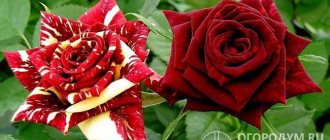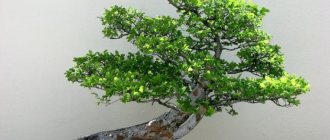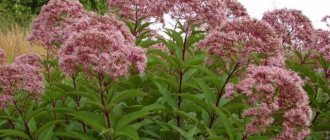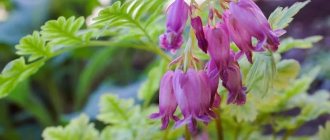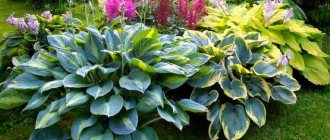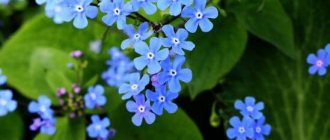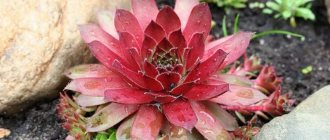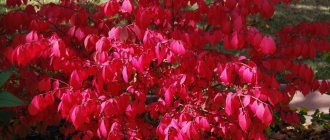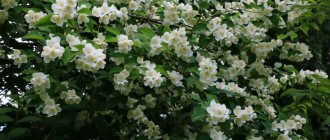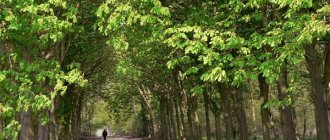Each of us dreams of surrounding ourselves with comfort, adding aesthetics and beauty to our days. Those who have summer cottages are increasingly wondering how exactly to decorate their territory. This is where landscape design comes to the rescue. It makes it possible to make your garden cozy, harmonious and individual. For flower lovers, perhaps the best thing would be to use a perennial plant such as garden begonia in your project.
Garden begonia is ideal for decorating flower beds and borders in a country area
Which begonia variety to choose for the garden?
Begonia - common in the form of vines, subshrubs and shrubs. Mainly 3 types are used for gardening.
Each variety of begonia is beautiful in its own way
Tuberous
Tuberous begonia is a low plant, reaching 30 cm in height. In diameter from 5 to 22 cm. Fruits in winged capsules. The flowers are dioecious, that is, both male and female flowers are present on the same plant. The most common varieties are: Golden Ball, Orange and Cupferorange.
Tuberous begonia decorates summer cottages from June to September, and blooms in closed greenhouses until late autumn
Tuberous begonias have many subspecies, and they are all very different from each other. These varieties grow best in pots or special containers, which make it easier to ensure proper watering. They may die in open ground. They do not like abundant watering and direct sunlight.
Ampelnaya
Begonia ampelous - belongs to the subspecies of tuberous begonia. It is also called pendulous. The shoots are long and dotted with flowers at the top. They have beautiful glossy leaves and are usually grown as houseplants. But they also do well in the shade outside, living in any pots.
The shoots of ampelous begonia can grow up to 80 cm, and the flowers retain their decorative effect until light frosts.
Everblooming
Begonia everblooming - presented in the form of small bushes with green foliage and a riot of flowers. The height does not exceed 15 cm. The most popular: Firemeer and Olomouc. Ever-blooming begonia is easy to care for. Blooms from spring to autumn, and is easy to grow in pots and garden beds. When planted densely, it provides an abundance of flowers.
Different varieties of ever-flowering begonia differ in color, leaf size and flowering period
There is also a hybrid ever-blooming begonia. This is an ordinary begonia, but several times larger. In America they are also called the 50 mph plant. Because they create an incredibly captivating appearance when viewed from a car at this speed. The hybrid variety can grow between 50-90 cm in height.
Begonias look good in company with other ornamental plants
Dwarf coniferous plants, cereals, hostas, and cineraria coexist perfectly next to begonias.
In the past, begonia color choices were usually limited to green or bronze foliage with white, pink or red flowers.
Flower for the quartermaster or the history of the name
Humanity owes the discovery and detailed description of several types of begonia to the Franciscan monk Charles Plumiere and the French intendant of the fleet Michel Begon.
Begonia in composition with ageratum
The first of them was a botanist, as they were then called a “plant hunter,” and the second simply dreamed of decorating Rochefort’s jurisdiction with unusual specimens of plants.
It was Quartermaster Begon who organized the expedition, during which Plumiere discovered an unusual plant in Haiti with asymmetrical leaves and soft pink flowers, shaped like butterflies.
Hosta - varieties and care
He named it begonia in honor of his patron, and later discovered several more related plants. Unfortunately, during his return to France, Plumiere lost his herbarium and seeds due to a storm, leaving only sketches. Michel Begon never saw the flower, thanks to which his memory remained in history.
How to grow garden begonia: planting and care
With the onset of warm weather, they begin to plant the plant in its permanent place. You need to make sure that there will be no more frost. Tuberous begonias are planted when the plant has produced flowers; before that they are kept in greenhouses.
Before planting, the tubers must be cleaned of rotten sprouts and treated in a weak solution of potassium permanganate
Begonia everflowering is planted with seeds through seedlings
For rich and healthy flowering, you need soil saturated with minerals and trace elements with an acidic reaction.
Watering should be moderate during the flowering period and abundant during the growing season. Also, do not forget that during the growth period it is necessary to feed the plant:
- To help increase the green mass in the spring, use the entire complex of fertilizers. They can be purchased at any gardening store. That’s what it says on the packages – fertilizers for begonias.
- When the plant produces buds, phosphorus and potassium fertilizers, as well as microelements, should be given.
Begonia does not like crowding, although it creates a continuous cover. When planting, each plant should be located at a distance of 30 cm from each other. The flower itself is perennial, but in our conditions it usually does not survive wintering, so a new planting is required the next year.
Planted begonia seedlings in a garden bed
The best place for it will be a semi-dark area in the garden. Does not tolerate standing water. Prefers rich acidic soil. You can help begonias overwinter by using a dense layer of mulch around the root system.
It is best to water begonia in the morning, before the heat sets in.
To protect begonias from pests such as greenhouse aphids, scale insects, whiteflies, thrips and nematodes, it is necessary to resort to the help of drugs, the dosage of which is indicated by the manufacturer on the packaging. Most infections occur in greenhouses.
Spider mite on begonia Powdery mildew on begonia Nematode on begonia
Begonia can also suffer due to improper care: too much watering, poor feeding and the wrong site for planting it. Begonia flowers planting and care in the garden.
Inexperienced gardeners should refrain from planting the plant in open ground, as it is not frost-resistant.
Many gardeners grow begonia at home in containers and take it out into the garden only in the summer.
Watering the plant
Watering will depend on the season - either abundant or moderate. It should be remembered that insufficient or excessive watering can quickly destroy your plant. It should be watered after the soil has dried about two centimeters.
Make sure that water does not stagnate in the soil and adjust the volume when watering. For irrigation, you should take purified or melted water at room temperature.
Begonias are planted in early spring. It is best to replant the next day after watering the plant.
Beautiful photos with begonias
By looking on the Internet for examples and photos of begonia flowers in the garden, you can understand what exactly you would like to see in your design. Until the very first cold weather, flower beds with begonias will look great. With proper care and following all recommendations, you will get a high-quality result that will delight you.
Round flowerbed with terry begonias of various colors
This is roughly what an ideal design for a round flower bed using begonias looks like. Well-chosen flowers attract attention, but at the same time create an atmosphere of comfort.
Begonias in pots in front of the porch of a country house
A great example of how begonias can be used in pots. Showing your imagination, you can decorate a balcony, front door, path in the garden, gazebo or path to the house, choose flowers to match the decoration of the house or other plants in the garden.
Luxurious flower garden with begonias in combination with other plants
In this photo you can see how begonias can be used to decorate taller or rougher plants. In addition, this flower unobtrusively fills all the free space. Excess can be easily trimmed without harming the plant.
Begonias in containers on a brick porch
Here we see a simple, yet elegant and aesthetically pleasing example of a yard design. A brick covering with the same curb goes well with decorative plantings. It is not necessary to plant begonias along clearly defined lines. They will decorate any space in the garden.
Plant species
To grow at home, you should give preference to hybrid forms of begonia. Flowering and deciduous begonias have the same decorative qualities.
If you have doubts about whether you can cope with growing this wonderful plant, you can see begonia and photos of care at home to understand that it is not as difficult as it seems.
Flowering species can be divided into two categories:
- Evergreen representatives. They bloom less spectacularly, but they captivate with their lush greenery, which they have all year round.
- Dropping leaves. They bloom very beautifully and luxuriantly. However, the foliage dies off at the end of the season. In order to grow a new generation of flowers, you will need fresh tubers for propagation.
Photo of begonia in the garden
Begonia flowers in a rustic flower pot.Groups
Begonia is a perennial or annual herbaceous plant. It grows in a variety of ways: in the form of creeping herbs, tall bushes, and subshrubs. So that experienced gardeners, and especially beginners, do not get confused, all types of begonia are divided into three conditional groups, each of which has its own distinctive features.
Tuberous
They are distinguished by large double flowers that bloom profusely on the bush. Also, this group of begonias has the longest flowering period. Tuberous plants can be grown both in tubs or flower beds, and at home. The bulbs of this group overwinter in an old pot or in the refrigerator, and after waking up they quickly resume the growing season.
Bush
They can be either annual or perennial. The former are more often used for outdoor and tub growing. At zero temperatures, the surface part of the bush dies, but it can resume growth if the ground is not frozen and the roots are preserved.
Decorative foliage
Bright, carved leaves distinguish this group from the rest. The most popular varieties are those with matte, “fluffy” leaves.
These begonias reproduce by means of rooting or dividing leaves. But, despite the division, all begonias have several common characteristics: the obligatory presence of unisexual flowers, a fleshy stem, asymmetrical leaves, and a powerful, thick rhizome.
Both gardeners and hobbyists sometimes confuse annual and perennial plants. To avoid confusion, we need to take a closer look at the types of begonia.
Reproduction
Possibly tubers, cuttings and seeds.
The first method is the simplest and most accessible; it is enough to separate the daughter shoots from a large tuber and plant them separately. Cuttings need to be rooted in a loose substrate , placing them in a greenhouse. This can be done at any time, even in winter. Propagation by seeds is the most labor-intensive method, but it produces a large number of new plants.
You will find more information about methods of propagating begonias in this article.
Choosing colors
An important aspect when drawing up a flower bed scheme is the color of plant buds. At the initial stage, it is better to use only 2-3 contrasting shades, and later move on to more complex color transitions and combinations. But even a beginner should understand that color has a significant impact on a person’s psycho-emotional state, so you should choose plants that produce flowers with the shade of petals that you like.
Choosing colors for a garden flowerbed
Table. Colors and their influence on humans.
| Color | Characteristic |
| Yellow | It is usually preferred by joyful and active people; it is the color of a good mood. And it will give confidence to a shy person. In the garden, this color will be given by lilies, marigolds, calendula, snapdragons, daylilies, cinquefoil, and rudebeckia. |
| Pink | Improves mood, relieves sad thoughts. Meadowsweet, cosmos, petunia, carnation, daisy will give this color in the flowerbed. |
| Blue | Calms, comforts, relieves stress. Iris, lavender, forget-me-not, delphinium - flowers with blue petals. |
| Red | The color of energy, strength, optimism, passion. Carnation, primrose, rhododendron will give it to you. |
| Violet | A color that improves your emotional state and has a positive effect on the functioning of the immune system. These are lilacs, violets, speedwell, pansies, and aster. |
| Orange | A color that gives self-confidence and lifts your spirits. These are chrysanthemum, marigolds, cinquefoil, and gravilate. |
Flowerbed of petunias and marigolds
Yellow flowers for a flower bed
On a note! Variegated flower beds can always be slightly diluted with white flowers. They will add zest to the plantings. And in order to choose colors that combine with each other, use the color wheel.
Flower schemes
To make it easier to navigate when creating your own scheme, we suggest that you familiarize yourself with several simple but beautiful ready-made options.
Table. Flower bed schemes.
| Scheme, photo | Description |
Scheme No. 1 | 1 – annual stock roses of three colors (white, red, yellow); 2 – decorative sunflower; 3 – Spanish poppy; 5 – cardinal lobelia; 6, 7, 8 – bell, catnip; 10 – sedum. The remaining flowers can be selected in accordance with the color indicated in the diagram. |
Scheme No. 2 | Flowerbed cake: 1 – low red flowers; 2 – white or silver flowers; 3 – medium-sized plants with red flowers; 4 and 5 – high background crops. |
Scheme No. 3 | Round flowerbed: 1 – cannas; 2 – begonia; 3 – petunia; 4 – snapdragon; 5 – marigolds; 6 – alyssum; 7 – ageratum; 8 – pyrethrum. |
| Scheme No. 4 | 1 – amaranth; 2 – zinnia; 3 – garden quinoa; 4 – chard; 5 – basil; 6 – nasturtium. |
Scheme of a flower bed of shade-tolerant annuals
Planting flowers by sector
Scheme of a round flower bed of tulips, daffodils, hyacinths, scilla and mouse hyacinth
Flowerbed of bulbous plants - diagram
